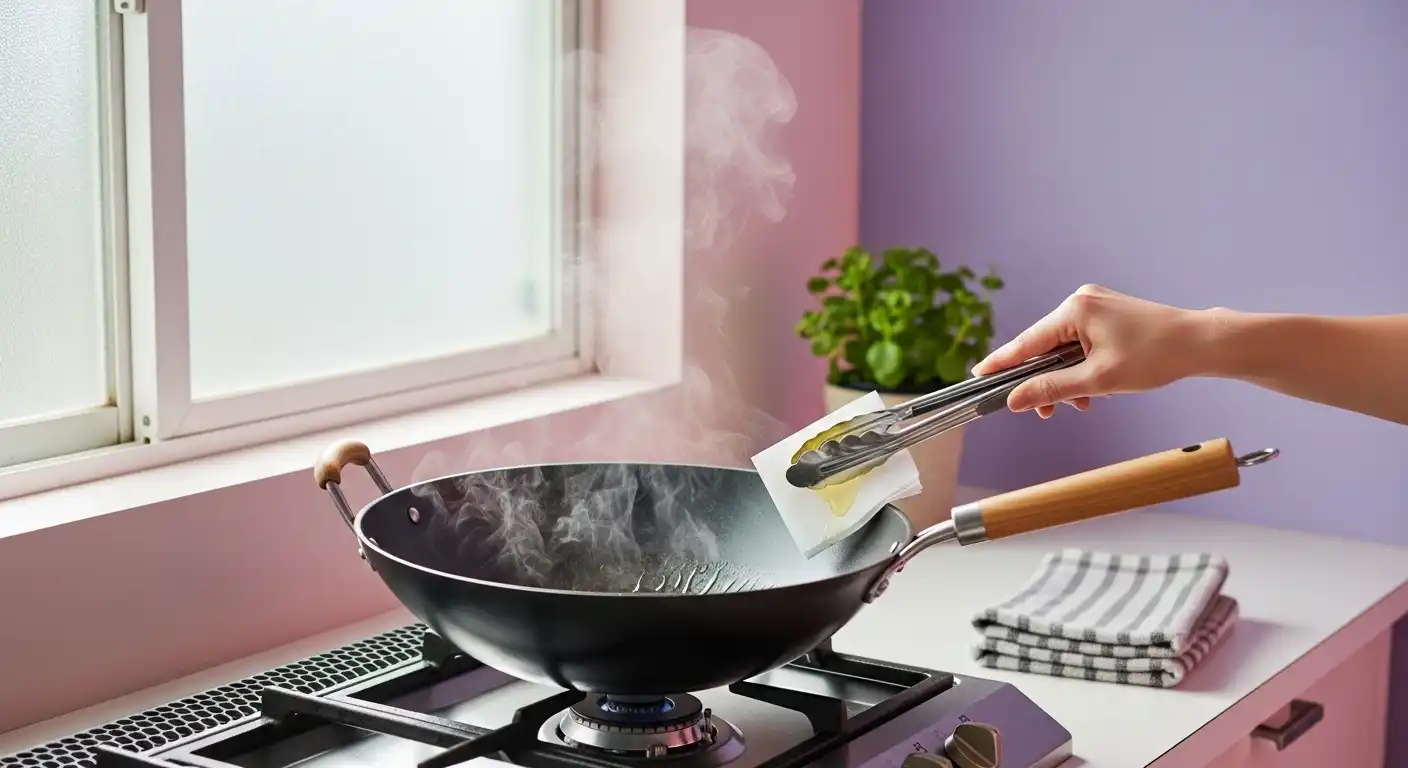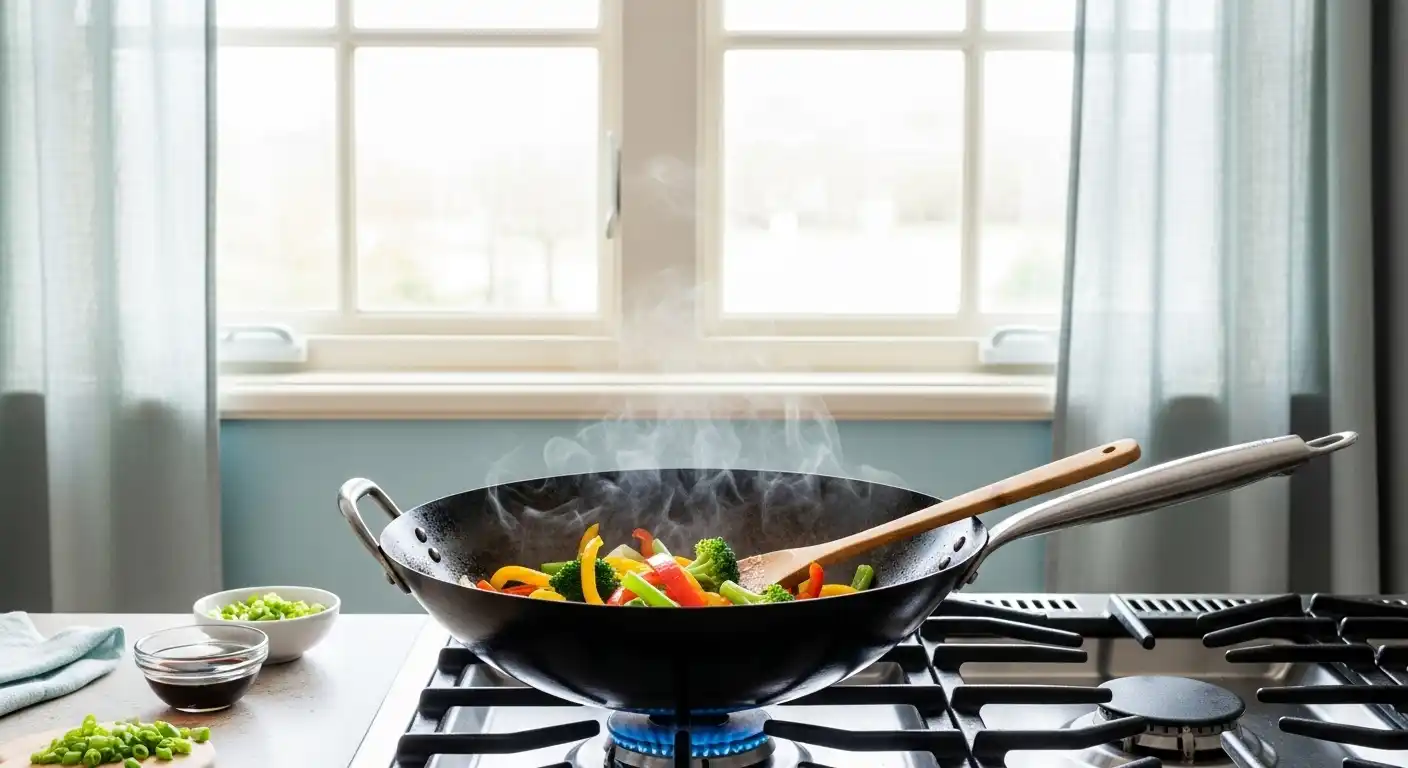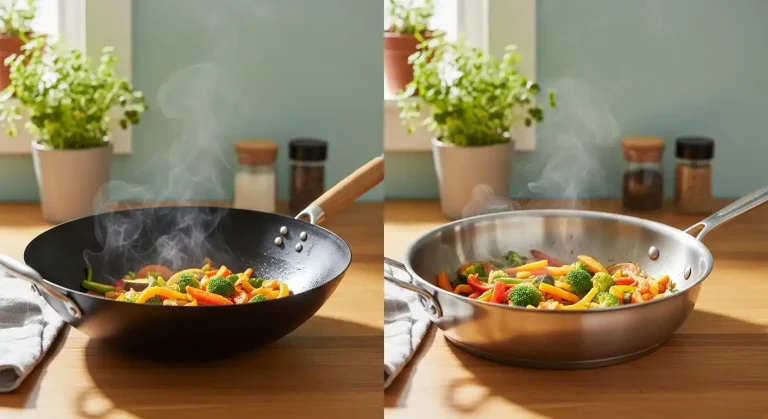How to Season a Wok Carbon Steel: A Step-by-Step Guide

Seasoning a carbon steel wok is like giving it a superpower. It transforms your wok into a non-stick, flavor-enhancing cooking vessel that’s perfect for stir-fries, steaming, and more.
But how do you season a wok carbon steel properly? This guide will walk you through every step to ensure your wok is ready for culinary greatness.
Whether you’re a home cook or a wok enthusiast, seasoning is key to unlocking your wok’s potential.
A well-seasoned wok develops a patina—a dark, glossy layer that protects it from rust and enhances its cooking performance.
🎄 Christmas & Year-End Amazon Deals !
Don’t miss out on the best discounts and top-rated products available right now!
*As an Amazon Associate, I earn from qualifying purchases.
Let’s dive into the process and explore why it’s worth the effort.
Why Season a Carbon Steel Wok?
A carbon steel wok needs seasoning to create a natural non-stick surface. Without it, food sticks, rust forms, and flavors can’t develop properly.
Seasoning involves heating oil onto the wok’s surface, creating a protective layer. This patina not only prevents corrosion but also adds depth to your dishes over time.
For those wondering is a carbon steel wok safe for health, rest assured—seasoning makes it safe and enhances its functionality.
What You’ll Need to Season Your Wok

Before you start, gather these essentials:
- A carbon steel wok (check if it’s compatible with your stove, like carbon steel on induction)
- High smoke point oil (peanut, grapeseed, or vegetable oil)
- Paper towels or a clean cloth
- Tongs or chopsticks
- A heat-resistant brush (optional)
- Dish soap and a non-abrasive sponge
- A stovetop or outdoor burner
Having everything ready makes the process smooth and stress-free.
Step 1: Clean Your New Wok
New carbon steel woks often come with a factory coating to prevent rust during storage. This must be removed before seasoning.
Wash the wok with warm water, a small amount of dish soap, and a sponge to scrub off the coating. Rinse thoroughly and dry it completely with a towel.
Avoid harsh scrubbers that could damage the surface. A clean, dry wok is the perfect canvas for seasoning.
Step 2: Prepare Your Kitchen
Seasoning a wok can get smoky, so good ventilation is a must. Open windows, turn on your range hood, or consider seasoning outdoors on a portable burner.
If you’re using an induction stove, confirm that your wok is compatible by checking out can you use a carbon steel wok on induction.
Set up a safe workspace with your oil, paper towels, and tongs within reach.
Step 3: Heat the Wok
Place your clean, dry wok on the stove over medium-high heat. Heat it until it starts to change color—often turning bluish or brownish.
This step opens the metal’s pores, allowing the oil to bond effectively. Rotate the wok to heat all sides evenly, using tongs if needed.
🎄 Christmas & Year-End Amazon Deals !
Don’t miss out on the best discounts and top-rated products available right now!
*As an Amazon Associate, I earn from qualifying purchases.
You might notice a slight metallic smell—this is normal as the wok prepares for seasoning.
Step 4: Apply the First Layer of Oil

Once the wok is hot, reduce the heat to medium. Add a small amount of oil (about 1-2 teaspoons) and use a paper towel held with tongs to spread it evenly across the interior.
Be cautious—the wok is hot! Ensure the oil coats the entire cooking surface, including the sides.
The oil may smoke slightly, which is a good sign that it’s bonding with the metal.
Step 5: Heat and Repeat
Let the oil heat for 10-15 minutes, allowing it to polymerize and form the initial patina. The wok may darken slightly, which is expected (learn more about why carbon steel woks turn black).
Wipe off excess oil with a clean paper towel, then repeat the oil application and heating process 2-3 more times. Each layer builds a stronger, more durable patina.
Step 6: Cool and Test
After several rounds of seasoning, let the wok cool completely. It should have a smooth, slightly glossy finish.
To test, cook a simple dish like scrambled eggs. If they slide easily, your seasoning is off to a great start.
If food sticks, repeat the oiling and heating steps to build a better patina.
Maintaining Your Seasoned Wok
A seasoned wok requires care to keep its non-stick properties. After cooking, clean it with hot water and a soft sponge—no soap unless absolutely necessary.
Dry the wok thoroughly and apply a thin layer of oil before storing to prevent rust. Regular use strengthens the patina, making your wok better with time.
For those comparing materials, check out iron vs. carbon steel wok to understand why carbon steel is a top choice.
🎄 Christmas & Year-End Amazon Deals !
Don’t miss out on the best discounts and top-rated products available right now!
*As an Amazon Associate, I earn from qualifying purchases.
Common Mistakes to Avoid
Seasoning a wok is straightforward, but pitfalls can derail your efforts. Avoid these common mistakes:
- Using too much oil: Excess oil creates a sticky residue. Use just enough to coat the surface thinly.
- Skipping the initial cleaning: The factory coating must be fully removed, or the seasoning won’t stick.
- Not heating evenly: Rotate the wok to ensure all areas are seasoned properly.
Patience is key—rushing the process leads to uneven seasoning.
Benefits of a Well-Seasoned Wok
A properly seasoned carbon steel wok offers unmatched versatility. It’s perfect for high-heat stir-frying, searing, and even deep-frying.
The patina enhances flavors, giving dishes that coveted “wok hei” or breath of the wok. Plus, it’s durable and eco-friendly compared to non-stick coatings.
With proper care, your wok will last for years, becoming a kitchen heirloom.
Seasoning on Different Stoves
The seasoning process varies slightly depending on your stove. Gas stoves provide even heat, making them ideal for seasoning.
For induction users, ensure your wok has a flat base for proper contact. Refer to does carbon steel work on induction for tips.
Electric stoves work too, but you may need to rotate the wok more frequently for even heating.
Troubleshooting Seasoning Issues
If your wok develops rust, don’t panic. Scrub it off with a sponge and re-season the affected area.
Sticky spots indicate too much oil was used. Heat the wok, scrape off the residue, and apply a thinner oil layer.
Consistent seasoning builds a resilient patina, so keep cooking to strengthen it.
Cooking with Your Seasoned Wok

Once seasoned, your wok is ready for action. Start with simple stir-fries to build the patina further.
🎄 Christmas & Year-End Amazon Deals !
Don’t miss out on the best discounts and top-rated products available right now!
*As an Amazon Associate, I earn from qualifying purchases.
High-heat cooking enhances the wok’s non-stick properties. Avoid acidic ingredients like tomatoes or vinegar early on, as they can strip the seasoning.
Regular use and proper care will make your wok a kitchen workhorse.
Final Thoughts
Learning how to season a wok carbon steel is a game-changer for any home cook. It’s a simple process that pays off with a versatile, long-lasting cooking tool.
With a little practice, your wok will develop a rich patina that enhances every dish. So grab your wok, fire up the stove, and start seasoning—your stir-fries will thank you!
For more tips on using your carbon steel wok, explore how to season a wok carbon steel and elevate your cooking game.






